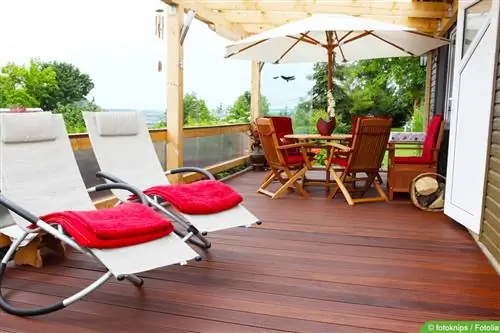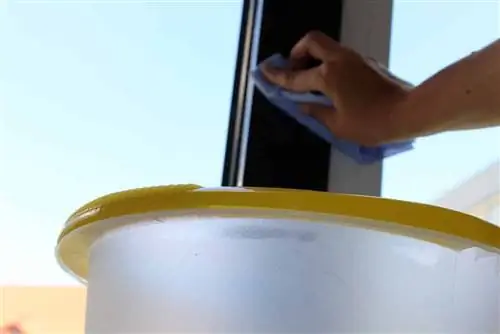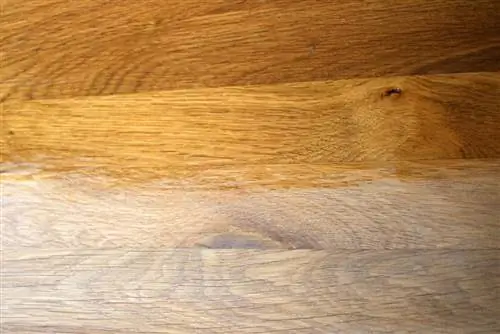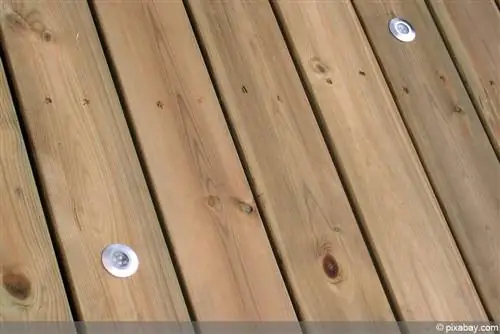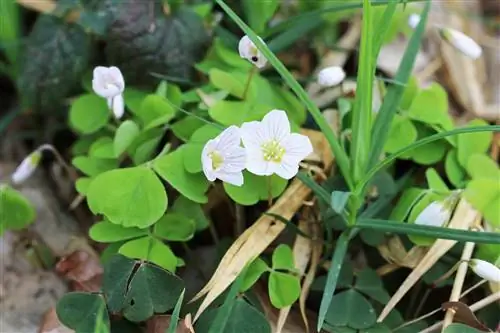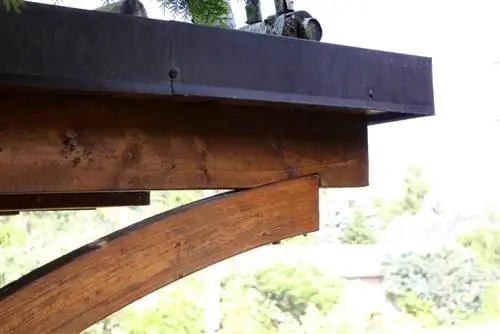- Author admin [email protected].
- Public 2023-12-17 03:39.
- Last modified 2025-06-01 06:48.
Furniture and floors made of teak are expensive to purchase and should therefore be properly cared for and cleaned so that the inherently robust material retains its beauty over time.
Cleaning
Cleaning teak furniture or floors outdoors or indoors is comparatively easy if it has been provided with appropriate protection. There are various utensils to choose from for removing dirt. Below:
- Brush and water
- Kärcher or high-pressure cleaner
- rag
- Soda
- curd soap
Teak - Indoor
Because the only thing that can dirty teak furniture in your house or apartment is usually dust. Drinks and food can of course also end up on it. Again, protected wood is easier to clean. If it has been oiled, glazed or painted, a simple (damp) wipe is often sufficient.
If there is light dirt on unprotected wood, we recommend making a solution of soap or washing soda and lukewarm water and brushing the surface with it. The high-pressure cleaner can be used for rinsing or can also be used to remove difficult dirt. If such a high-pressure cleaner is necessary, it should be used outdoors if possible.
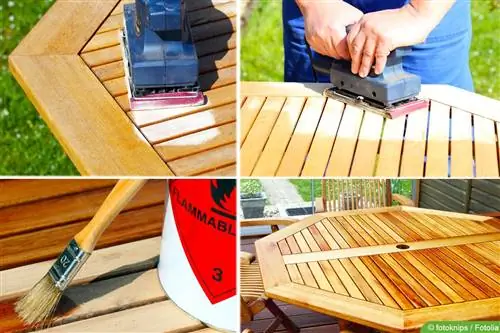
Tip:
In any case, it is important that cleaning is carried out as early and regularly as possible. The sooner the dirt is removed, the less there is and the easier it is to remove.
Teak - Outdoor
Heavily used furniture that is heavily soiled needs to be treated slightly differently. This is often garden furniture or patio flooring. In these cases, caring for and cleaning teak wood means that the following procedure is recommended:
- Dry contamination is removed by wiping and vacuuming. If they are stubborn, a dry sponge can also be used to loosen them.
- The protective layer of oil, varnish or glaze can be removed with a high-pressure cleaner if cracks or chipped areas already appear. If this is not the case, the layer should be sanded off if necessary. To do this, a sander is used, which is first equipped with coarse sandpaper and then with fine sandpaper. It makes sense to work dry initially and then wet - i.e. sand first and then use a high-pressure cleaner if necessary. This is required much less often indoors. However, it is always important to ensure that an appropriate distance is maintained. The manufacturer provides relevant information about this.
- Once the protective layer has been removed, any unevenness can be smoothed out by sanding. Dirt and discoloration can be removed as well as other residues. The wood is also enhanced in terms of appearance and function.
Note:
Teak wood that has been thoroughly cleaned in this way should then be protected again in order to reduce the effort required for subsequent cleaning and to extend its service life.
Repair and maintenance
Before an appropriate protective agent can be applied, not only thorough cleaning must be carried out. It is also important to compensate for damage and other defects. Possible measures are:
Leimen
It is often falsely claimed that teak cannot be glued. Due to the high oil content, some special features are actually required in the process. First, the adhesive surfaces must be roughened. A so-called two-component adhesive is then applied to the surfaces. Screw clamps can be used to ensure the connection between the two components and to create a resilient surface. Drying time is usually 24 hours. Following the manufacturer's instructions is always safer.
Colors
If errors or blemishes become apparent, color can be used to correct them. Pigmented varnishes and glazes or oils are ideal for achieving color matching. They also provide direct protection. Strictly speaking, they are not a repair, but can be used selectively as a double layer in preparation for protection.
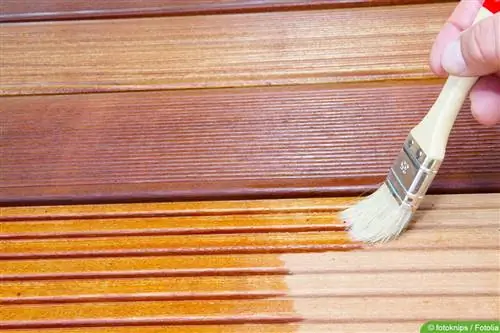
Ungreyer
So-called degreying agents or special cleaners can refresh the color of the teak and ensure a significant improvement, especially in unprotected wood.
Screwing and nailing
Nailing is not recommended due to the hardness of the wood. If it is necessary to connect two elements together, two components or the use of screws should be preferred. Due to the hardness, screwing is best done with special attachments and pre-drilling. Otherwise, not only is the effort significantly higher, but there can also be an increased risk of injury and material damage.
Protection
Applying the protection can begin when the following points are met:
- the teak is cleaned
- Damage is not present or repaired
- the material is completely dry and absorbent
You can choose from oil, varnish and glaze for protection. Oil, glaze and clear varnish preserve the grain. Colored varnish can create a plain-colored surface. Colored glaze allows the grain to still shine through, but changes the tone of the wood. Oil gives the teak a soft shine. All materials can be applied with a paint roller or brush.
In general:
- Paint for heavy use
- Lasur for less stressed surfaces indoors and outdoors
- If possible, only use oil for teak wood indoors
Tip:
The wood can first be glazed to change the color and then varnished to seal it. In any case, the individual drying time of the respective product must be taken into account.
Protection and storage
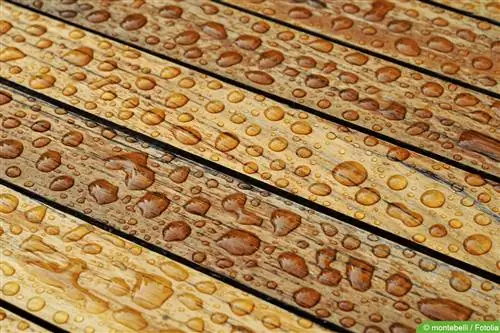
Teak is extremely durable and not least because of this it is particularly popular. However, protection and appropriate storage still make sense. Tropical wood can rarely be obtained sustainably. This makes it all the more important to handle it with care.
The following tips can help:
- store frost-free, dry and clean
- carry out regular and timely cleaning
- Renew protection quickly if necessary
- Immediately compensate for damage, for example to prevent further cracks
- Use covers
Especially in winter, furniture used outdoors should be stored dry and clean. This prevents easily avoidable damage caused by moisture and freezing temperatures. If the furniture is used indoors, coasters and place mats help prevent stains.

